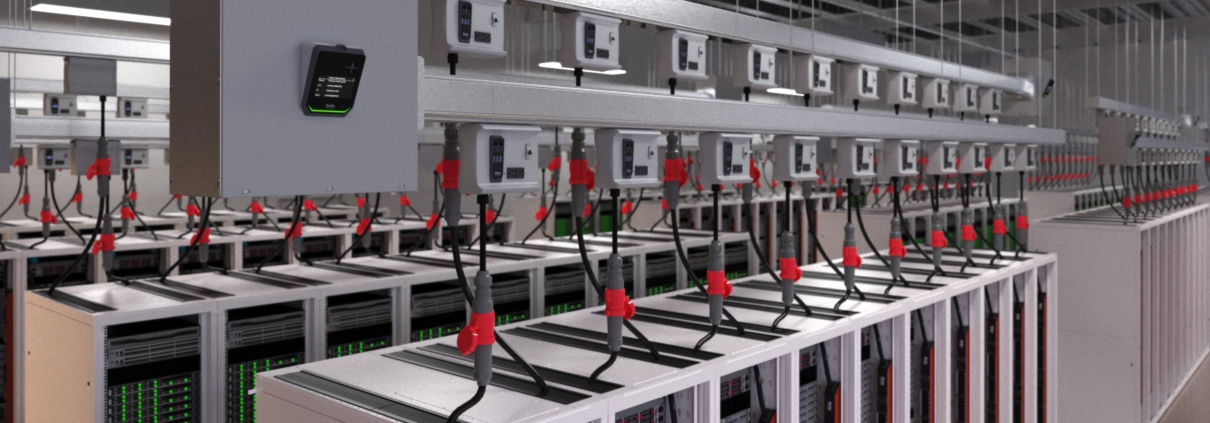Best UPS Battery Backup: How to Choose Reliable Power Protection That Fits Your Needs
In a world where even a few seconds of power interruption can disrupt networks, damage equipment, or lead to costly downtime, having a reliable Uninterruptible Power Supply (UPS) system is no longer optional—it’s essential.
But with so many options on the market, the question most decision-makers ask is: What truly makes a UPS battery backup the best choice?
The answer is not as simple as choosing the highest capacity or the longest runtime. The best UPS battery backup depends on how well the system aligns with your operational priorities—reliability, efficiency, and long-term value.
- What Makes a UPS Battery Backup “the Best”?
The term “best” can mean different things depending on the environment in which the UPS is used.
For a small office, it might mean stable short-term backup that allows computers to shut down safely.
For a network hub or data facility, it might mean sustained runtime, advanced battery management, and smart monitoring.
In reality, a “best” UPS system is not defined by brand or cost—it’s defined by fit. The right system matches your load profile, runtime requirements, and maintenance capabilities, ensuring that your critical operations remain uninterrupted even under stress.
- Core Factors to Evaluate When Selecting a UPS Battery Backup
Choosing the right UPS requires balancing technical specifications with practical needs. Below are key parameters that can help determine which system performs best in your environment.
Power Rating & Load Capacity
Every UPS is rated in volt-amperes (VA) or watts. To ensure proper sizing, your UPS capacity should exceed the total load of connected devices by at least 20–30%.
Underrated systems may trip under high surge loads, while oversized units waste energy.
Battery Type and Lifespan
Traditional VRLA (Valve-Regulated Lead-Acid) batteries have been the industry standard for decades, offering affordability but requiring regular maintenance.
Lithium-ion batteries, on the other hand, provide longer lifespan, faster charging, and better performance at varying temperatures—often lasting three to five times longer than lead-acid alternatives.
📖 Related Reading:
UPS Battery Maintenance: A Comprehensive Guide for Reliable Power Protection
Runtime Efficiency and Energy Loss
UPS efficiency is a measure of how much energy is lost as heat during conversion.
High-efficiency systems not only reduce electricity costs but also minimize thermal stress on internal components—extending system lifespan.
System Scalability and Hot-Swap Design
For growing networks or facilities, scalability is crucial. Modular UPS systems allow additional power modules or batteries to be added without downtime, minimizing operational disruption.
Monitoring and Communication Interface
Modern UPS systems often support SNMP, Modbus, or cloud monitoring tools, allowing administrators to track performance, battery health, and alerts in real time.
This integration reduces the risk of unnoticed battery degradation—a key cause of unexpected failures.
- Comparing Battery Technologies: Lead-Acid vs Lithium
Understanding battery chemistry is vital when evaluating UPS systems. While lead-acid batteries still dominate in some cost-sensitive markets, lithium-ion options have gained traction for their superior energy density and lifecycle economics.
| Feature | Lead-Acid (VRLA) | Lithium-Ion |
| Cycle Life | 500–800 cycles | 3000+ cycles |
| Maintenance | Regular testing and replacement | Minimal |
| Weight | Heavy | Lightweight |
| Temperature Range | Narrow | Wide |
| Initial Cost | Lower | Higher (but long-term savings) |
A practical way to decide is to consider total cost of ownership (TCO) rather than upfront price. Lithium UPS systems typically pay off through reduced maintenance, fewer replacements, and lower energy losses.
📖 Further Reading:
VRLA vs Lithium Battery for UPS: A Practical Guide for Data Center Backup Power
- Matching the Right UPS to the Right Application
Different industries and facilities define “best” in unique ways. The ideal UPS system depends on operational demands and tolerance for downtime.
- Office & Commercial Buildings:
Prioritize compact, line-interactive UPS units that ensure safe shutdown during brief outages. - IT Networks & Data Centers:
Look for double-conversion (online) UPS systems with lithium batteries for zero transfer time and extended runtime.
Runtime extension modules and parallel redundancy can prevent single-point failures. - Telecommunication Systems:
Require short-time, high-reliability backup to maintain call routing and signal integrity during grid instability. - Industrial & Manufacturing Environments:
Systems should handle high inrush currents and harsh environments. Reinforced housings and temperature-tolerant batteries are key. - Healthcare & Laboratories:
Demand clean, stable power with zero interruptions, often supported by lithium systems capable of operating under precise voltage conditions.
By focusing on environment-specific criteria, you can better define what “best” truly means for your organization.
- The Future of UPS Battery Backup: Smart Management and Lithium Integration
UPS technology is evolving rapidly toward smarter, more sustainable architectures.
The shift from VRLA to lithium-ion batteries is only the first step—today’s systems increasingly integrate intelligent monitoring, predictive analytics, and IoT-based management tools.
These smart UPS solutions can:
- Predict battery degradation and trigger preventive alerts
- Optimize charging cycles based on temperature and load
- Communicate with broader energy management systems (EMS or BMS)
- Reduce maintenance downtime by enabling remote diagnostics
In addition, lithium-based systems contribute to sustainability goals by offering higher energy efficiency and a lower carbon footprint over their lifecycle.
If you’re considering upgrading to a smarter and more durable UPS platform, you can explore additional information here:
To explore more about advanced lithium UPS battery systems designed for reliable backup applications, you can visit this UPS solutions page for further insights.
- Conclusion: Defining “Best” for Your Power Protection Strategy
The best UPS battery backup is not necessarily the most powerful or expensive—it’s the one that aligns perfectly with your operational needs, reliability targets, and sustainability goals.
When evaluating your next UPS investment:
- Assess your load and runtime requirements carefully.
- Consider total cost of ownership, not just upfront price.
- Evaluate the potential of lithium-based and smart systems to reduce long-term maintenance.
By adopting a performance-driven, data-informed approach, you can ensure that your organization’s critical systems remain resilient—today and in the years ahead.


